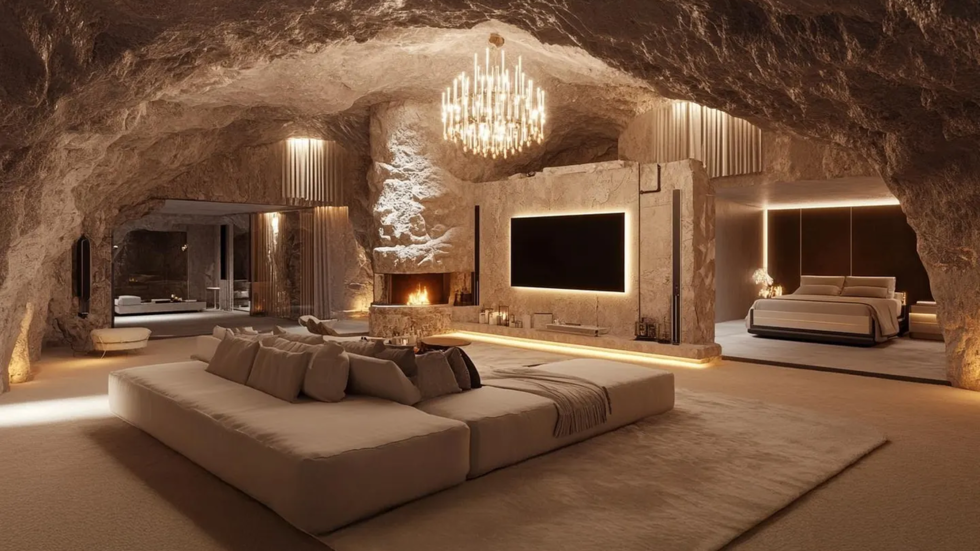Inside the $300 Million AI-Enhanced Doomsday Bunker: A Glimpse into Survival Technology
In an age where global uncertainties loom large, the concept of survival technology has gained unprecedented traction. A remarkable manifestation of this trend is the $300 million AI-enhanced doomsday bunker being developed by a pioneering U.S. firm. This state-of-the-art facility promises to revolutionize how individuals and families prepare for extreme situations, merging luxury with preparedness in a way that has never been seen before. But what exactly does this bunker entail, and how does it utilize artificial intelligence to enhance survival strategies? Let’s delve into the intricate details.
The Vision Behind the Bunker
The vision of this AI-enhanced doomsday bunker is rooted in the belief that preparedness is not merely about survival; it’s about thriving in adverse conditions. The firm behind this project has set out to create an environment that combines high-tech solutions with comfort and security. With the world grappling with various threats—from natural disasters to geopolitical tensions—this bunker aims to be a sanctuary for those who can afford it.
Design and Features of the Bunker
At a staggering investment of $300 million, this doomsday bunker is not just a reinforced shelter; it’s a fortress equipped with cutting-edge technology. Here are some of the key features that make it stand out:
- AI-Driven Security Systems: The bunker employs advanced artificial intelligence to monitor and predict potential threats. This includes facial recognition software, motion sensors, and automated surveillance drones that can provide real-time data to occupants.
- Self-Sustaining Environment: A sophisticated air filtration system ensures that the air quality remains optimal, even in the event of a chemical or biological attack. The bunker is designed to be completely self-sufficient, featuring its own water supply, waste recycling systems, and food production capabilities.
- Luxury Amenities: Beyond survival essentials, the bunker includes luxurious living spaces, entertainment systems, and even wellness facilities, ensuring that occupants can maintain their quality of life during extended stays.
- Advanced Communication Systems: To stay connected with the outside world, the bunker is equipped with satellite communications and encrypted internet access, allowing occupants to receive updates and communicate securely.
The Role of Artificial Intelligence in Survival
Artificial intelligence plays a crucial role in enhancing the functionalities of the doomsday bunker. Here’s how AI contributes to the overall preparedness strategy:
- Predictive Analytics: AI algorithms analyze vast amounts of data to predict potential crises, enabling occupants to prepare in advance. This can include anything from natural disasters to economic downturns.
- Resource Management: The AI system can optimize resource usage, ensuring that food, water, and energy supplies are managed efficiently. This not only extends the survival period but also reduces waste.
- Health Monitoring: Integrated health monitoring systems can track the physical and mental well-being of occupants, providing alerts for any medical emergencies and facilitating remote consultations with healthcare professionals.
Ethical Considerations and Criticism
While the concept of AI-enhanced doomsday bunkers is undoubtedly intriguing, it does raise ethical questions. Critics argue that such facilities could amplify social inequality, creating a divide between those who can afford luxury survival options and those who cannot. Furthermore, there are concerns about the environmental impact of constructing such large, resource-intensive shelters.
Moreover, the reliance on technology in life-or-death situations poses risks. What happens if the AI systems fail or are compromised? These concerns highlight the importance of balancing cutting-edge technology with traditional survival skills and preparedness strategies.
The Future of Survival Technology
The $300 million AI-enhanced doomsday bunker represents a significant leap forward in survival technology, blending luxury with essential preparedness. As global uncertainties continue to rise, the demand for such innovative solutions is likely to increase. Here are a few potential trends we might see in the future of survival technology:
- Increased Accessibility: As technology becomes more advanced and affordable, we may see similar survival technologies becoming available to a broader audience, not just the ultra-wealthy.
- Integration with Smart Home Technology: Future survival systems could integrate seamlessly with existing smart home technologies, allowing for a holistic approach to home security and crisis management.
- Focus on Sustainability: As awareness of environmental issues grows, future bunkers may prioritize sustainable practices, utilizing renewable energy sources and eco-friendly materials.
Conclusion: A New Era of Preparedness
The $300 million AI-enhanced doomsday bunker offers a fascinating glimpse into the future of survival technology. It reflects a growing recognition of the need to prepare for extreme situations while maintaining a sense of normalcy and comfort. As we navigate an increasingly complex world, the intersection of luxury and survival may well define a new era in preparedness.
While the concept may seem extravagant to some, it also serves as a reminder of the importance of being ready for the unexpected. Whether through high-tech bunkers or more traditional means, the goal remains the same: to ensure safety and security in an uncertain world. As advancements continue, we must embrace innovation while also considering the ethical implications and striving for inclusivity in preparedness strategies.
See more Future Tech Daily

